 |
| hoth making of | |
| jedi temple making of | |
| bull rancor making of | |
| felucia making of | |
| . Making of Hoth | services | contact | about mirena |
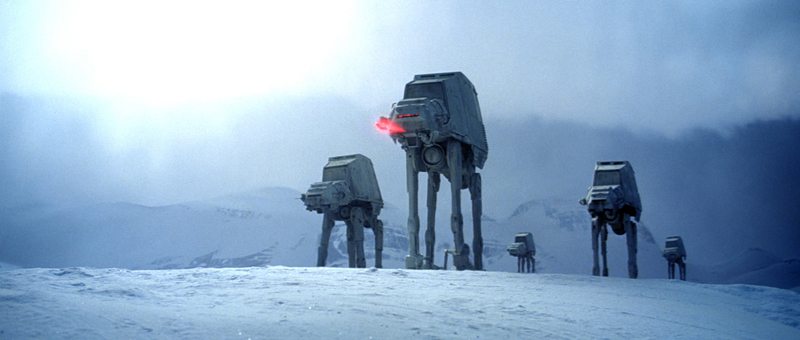
Above: Movie still from Ep 5 which served as an ATAT formation reference for the intro in-game cinematic.
Game: Star Wars: the Force Unleashed - Ultimate Sith Edition
Level: Hoth
Platforms: Xbox 360/PS3.
Credits: Lead Environment Artist
Detailed credits: As an Environment Lead I had several tasks and my main goal was making sure art worked out a compelling gameplay space. My duties included environment art team management, environment art pipeline development so we can successfully implement new snow and ice shaders, faithful recreation of key movie sets and especially the Hoth battle, managing of in-game cinematics content, outsourcing pipeline development and implementation, art drop reviews.
I was also a part of the Lucasarts/ILM convergence team which was in charge of developing the internal editor and art pipeline. We worked closely with Lucasfilm Director of technology and Lucasarts and ILM engineers to develop strategies and goals for internally developed technology. We also looked at some of the cutting edge ILM technologies under development at the time and thought of ways they could be used for the game development pipeline. As part of this leadership team I attended leadership seminars and wrote a number of proposals for improving the art pipeline and internal technology, from an artist's and art manager's point of view.
The best way to make an awesome game is to have a good understanding of the game development arc and development machine. Indeed making games is not unlike any other manufacturing process with stages and clear goals at each stage. The following is the playbook for developing a AAA title, it shows all the necessary steps your work needs to go through before it becomes a disk or a download in your customer's hands. Every single game, even prototyping a level and even building a prop, more or less, go through the following stages. So if you ask me where I begin when starting a new project, or a specific gamespace, this is what I look at first thing:
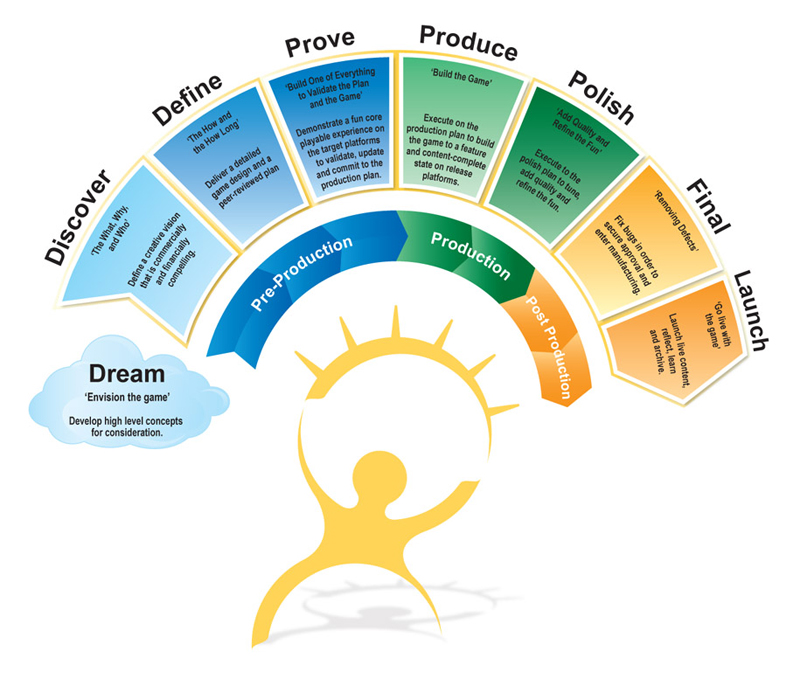
Process: Design came up with an overview of the mission and here is a portion of the world map. From this world map we came up with ideas as to what each area would look like:
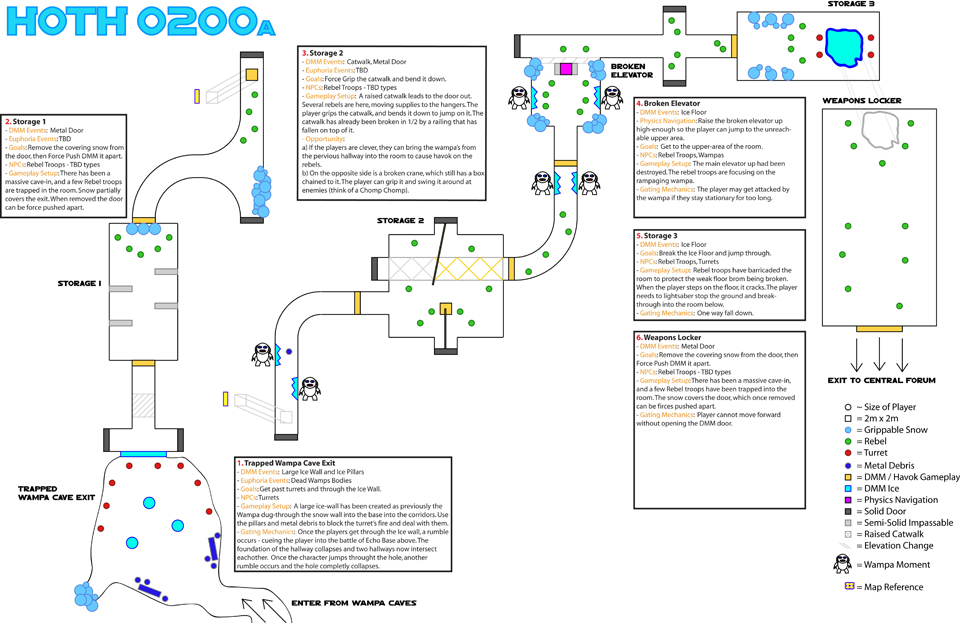
First I delved into the ILM's Paris and Pandora databases and also asked one of the Lucasarts veterans, Tony Rowe, for ideas and help with finding production shots we can use in constructing key sets. Unlike movie stills which rely on smoke and mirrors to conceal details and turn up mood, production shots reveal more of the production designer's vision, which might be too detailed for the director's vision. Here is a production shot of the Wampa cave which revealed the space in more detail:

Using the above as a reference - here is what we ended up with for the entrance of the Wampa cave in-game:
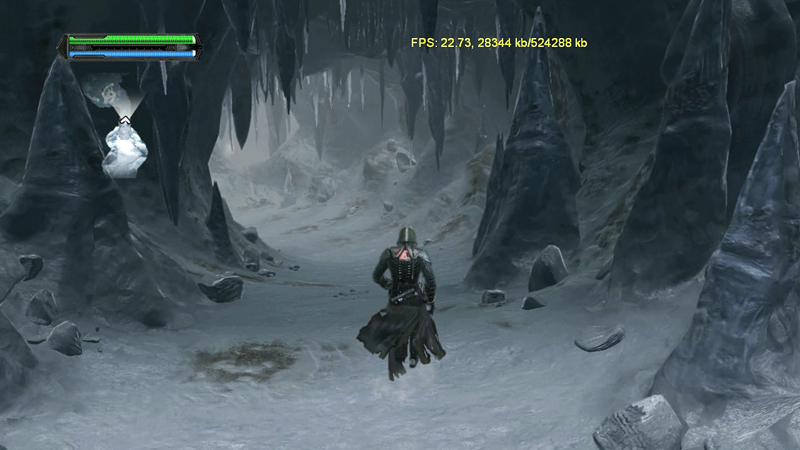
I would often use an amalgamation of images to create a composite portrait of Echo Base Landmarks. The Echo Base Command Center had to be, as envisioned by the Mission Designers, a fairly large playspace to accomodate a huge battle sequence. Here is what Echo Base Command Center looks like in the movie:
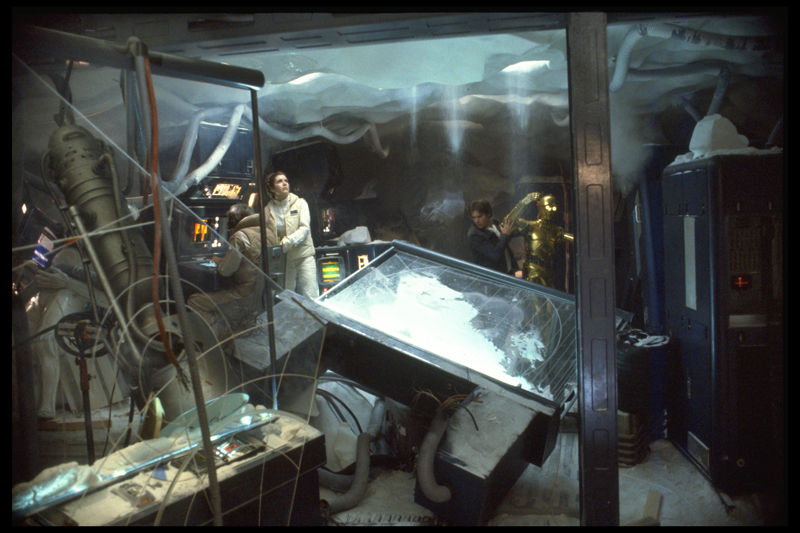 .
.
A movie still from Episode 5 served as the guide for lighting the space:
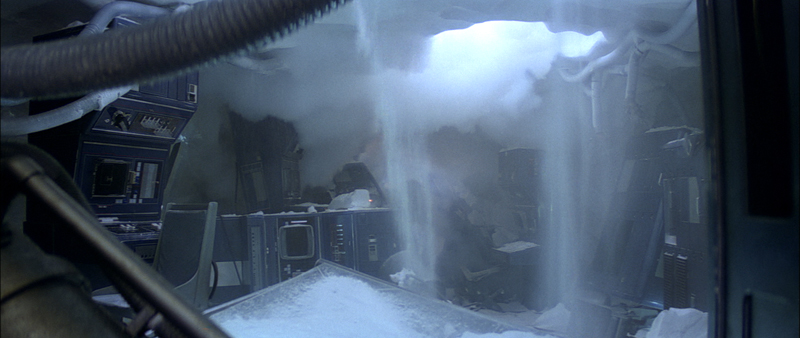
And here is Ralph McGuire's concept for the space which gave me the elements with which to organize the larger space:
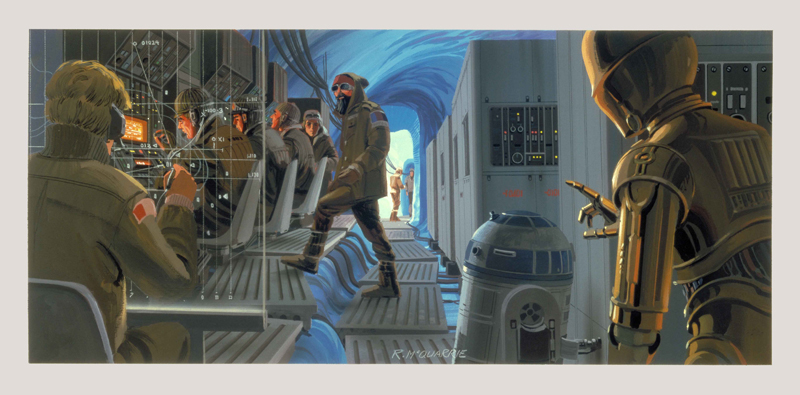
And this is what the final Command Center playspace looked like in-game:
